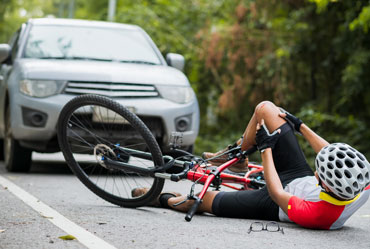Search

Cycling offers a unique blend of exercise, transportation, and leisure, appealing to millions worldwide who embrace it for its simplicity and benefits. However, with urbanization and increasing traffic, bicycle accidents have become an unfortunate reality. Whether commuting through city streets or enjoying a leisurely ride in the countryside, cyclists must be aware of the potential risks and the necessary steps to take should an accident occur. Understanding how to navigate life after a bicycle accident is essential for recovery and safety.
Your first priority should always be safety. If possible, move out of the road to prevent further danger. Check yourself for injuries, and if you’re unable to move, wait for emergency assistance. Ensure you and anyone else involved is out of harm’s way.
Contact the police and medical services immediately, regardless of the accident’s severity. A police report will provide an impartial record, crucial for insurance and legal matters. Medical evaluation is equally important, as some injuries may not be immediately apparent.
Collect information from all parties involved, including their names, contact details, and insurance information. Document the scene with photographs, capturing images of the bicycle, any vehicles involved, visible injuries, and the overall scene.
Even if you feel unharmed, consulting a healthcare professional is vital. Bicycle accidents can result in hidden injuries such as concussions or internal injuries that may only become evident later. Prompt medical examination not only ensures personal health but also establishes a record, beneficial for any insurance or legal processes that may follow.
Dealing with insurance after a bicycle accident can be complex, particularly when it involves a motor vehicle. Here’s how to effectively manage the process:
Notify your insurance provider as soon as possible about the accident. Provide them with detailed information and cooperate during their investigation.
Bicyclists often overlook the extent of their insurance coverage. Familiarize yourself with the specifics of your policy, especially if it covers personal injury protection or if homeowners’ policies can be applied.
Consulting a lawyer, especially one specializing in bicycle accidents, can be advantageous. Legal professionals can navigate the intricacies of insurance claims, ensuring fair representation and protection of your rights.
The trauma from a bicycle accident isn’t limited to physical scars. Emotional and psychological impacts can be significant, leading to anxiety or reluctance to ride again. Here are a few strategies to cope:
It’s normal to experience a range of emotions following an accident. Allow yourself time to process these feelings and acknowledge that they are a part of the healing process.
Engaging with a mental health professional can provide you with strategies to cope with anxiety or PTSD. Support groups, where you can share experiences with others who’ve undergone similar situations, may also be beneficial.
Lean on family and friends for emotional support. Talking to loved ones can help you process the experience and reinforce your confidence.
For many, overcoming the fear and returning to cycling after an accident is a crucial part of recovery. Here’s how to approach this challenge:
When you’re ready, begin with short rides in safe, familiar areas. Gradually increase the distance and difficulty as confidence builds.
Equip yourself with a properly fitted helmet, reflective clothing, and lights if riding in low-light conditions. Knowing you’re protected can enhance your confidence.
Joining a cycling safety course can reinforce road skills and promote safe cycling practices, making your return to riding more comfortable and secure.
The road to recovery after a bicycle accident is personal and multifaceted, encompassing physical, emotional, and logistical challenges. By prioritizing safety, seeking professional guidance, and gradually rebuilding confidence, cyclists can reclaim the joy of riding while safeguarding against future incidents. Remember, resilience and proper preparation are your strongest allies as you pedal forward on the journey of recovery and rediscovery.